Collarbone (Clavicle) Pain
Last reviewed by Dr. Raj MD on January 12th, 2022.
The collarbone (clavicle) can have various causes and types of pain. In this article, you will read about the specific anatomy of the collarbone as well as its basic functions.
Also found here are the many diagnoses that must be ruled out when working through a differential diagnosis for collarbone or clavicle pain.
Anatomy of the Collarbone
The collarbone rests over the neck and shoulders. It is actually called the clavicle and attaches the shoulder blade or scapula to the head of the sternum. Other than that connection its functions are to protect neurovascular structures in the shoulder area.
It also transmits strength between the upper limb and the axial skeleton. You can palpate this bone to the left and right of the upper chest just under the neck. The clavicle bone can be separated into three major sections. (13)

Image 1 : Among other bone landmarks you can see in this image the major three areas of the clavicle bone which consist of the medial or sternal end
Photo Source : teachmeanatomy.info
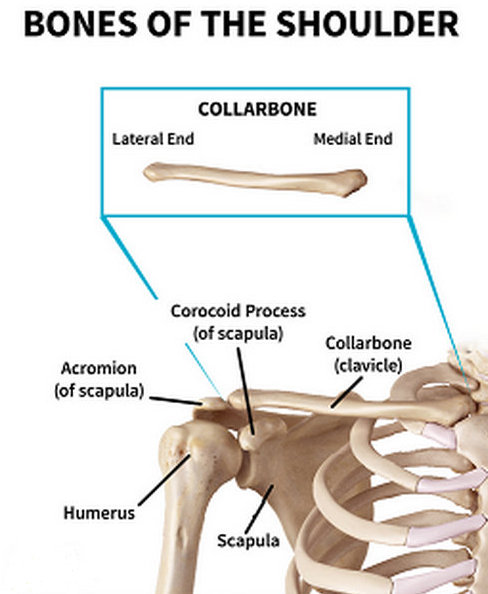
Picture 2 : A clear depiction of the bone structure surrounding the clavicle or collarbone.
Image Source : www.braceability.com
Causes and Differential diagnosis
Thoracic Outlet syndrome
The space that lies between your collarbone and first rib is called the thoracic outlet. This area is full of nerves and blood vessels. In some patients, it has been noted that the shoulder muscle is unable to hold the collarbone where it should be therefore crushing or putting excess pressure on these neurovascular structures.
The specific pain for this diagnosis will be seen alongside other symptoms such as:
- Swelling of the arm or hands
- Numbness and tingling
- Discoloration of the affected extremity.
When this happens the collar bone falls into this outlet and can cause pressure on the nerves and vessels found there. There are various types of thoracic outlet syndrome:
- Neurogenic or neurological: when the brachial plexus is compressed
- Vascular thoracic outlet syndrome: when the veins or arteries are being compressed.
- Nonspecific-type or disputed thoracic outlet syndrome: The specific cause of the pain is not diagnosable.
Treatment for thoracic outlet syndrome include physical therapy and anti-inflammatory medications. (1,2,8)

Figure 3 : This image is a perfect description of what the thoracic outlet looks like and where it is found.
Photo Source : orthoinfo.aaos.org
Fractures of the Clavicle bone:
Fractures can occur for many reasons, the most common of these is sports injuries. The type of fall that may cause a clavicle fracture would be if the person falls on their shoulder, or falls on an outstretched hand.
Also, of course, any direct hit or trauma to the clavicle bone could cause a fracture. Specific symptoms of a fracture is a patient cradling their arm. There may also be swelling or protrusions of the bone noted around the normal setting of the clavicle bone.
Bruising and redness may also be noted if the fracture is due to trauma. A broken collarbone can take months to heal and should be protected during the process. (2, 4, 6, 7)
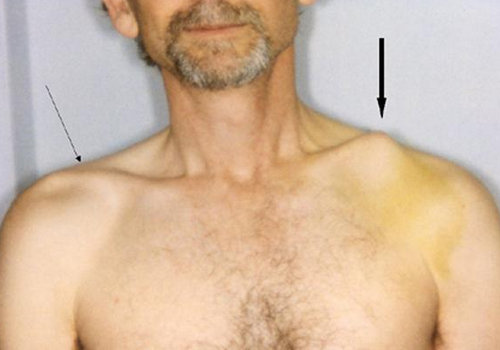
Photo 4 : In this picture, you can compare the right and left clavicle bones and see that one is notable higher.
Image Source : img.medscapestatic.com
A fracture should be diagnosed via radiography. The diagnosis of clavicle injuries can be placed in the following groupings:
- I fractures: noted in the middle third of the clavicle
- II fractures: noted in the distal third of the clavicle
- III fractures: noted in the medial (proximal) third of the clavicle
Treatment for collar bone fracture includes immobilization of the arm and minimal movement of the upper body during the healing process. Pain and anti-inflammatory medications may also be prescribed. (2,4,6,7)
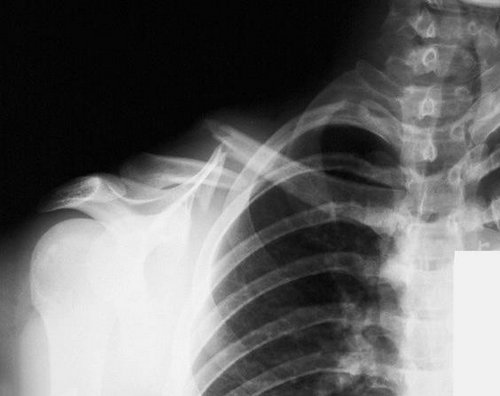
Picture 5 : This image shows a group I clavicle fracture. This fracture would be evident like the one in the previous picture.
Picture Source : img.medscapestatic.com
Acromioclavicular joint injury:
AC joint injury can happen with the poor use of body mechanics when lifting or move heavy objects. The specific pain to this joint would be associated with movements such as pulling or pushing.
Treatment involves physical and or occupational therapy as well as anti-inflammatory medications. (2)
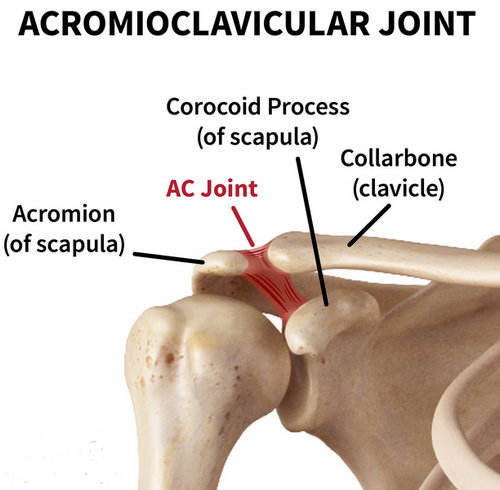
Image 6 : The AC joint and how it is connected to the collarbone.
Photo Source : www.braceability.com
Sternoclavicular joint (SCJ) injury:
This happens when the sternoclavicular joint ligaments become disrupted and cause joint dislocation. This can only be caused by extreme pressure or force. There are three types or grades of SCJ injury:
- 1st degree: Is a simple sprain which is a tearing or stretching of the ligaments. This will cause mild discomfort but the arm and shoulder are functional.
- 2nd degree: Anterior and posterior subluxation happens and there is a complete breach of the ligament. This causes a partial tear in the ligament. This will be very painful and the arm is slightly functional.
- 3rd degree: This is a total rupture of the ligaments and a complete dislocation. There will be severe pain and the arm is not functional.
Treatment involves physical and or occupational therapy as well as anti-inflammatory medications(3, 8, 10)
Acromioclavicular joint arthritis:
This is a joint disease in the same joint highlighted in the above image. This pain can develop after multiple injuries to the area. The pain for this diagnosis will be stronger when you try to reach your arms up over your head. Another symptom could be clicking or popping of the joint with normal movement.Treatment involves physical and or occupational therapy as well as anti-inflammatory medications(10,12)
Improper sleeping position:
This can cause your color bone to be in a position that it should not be. If you are a heavy sleeper the discomfort may not wake you up. The specific pain coming from improper sleeping position should subside within an hour of waking.Treatment is movement of the arm until the symptoms subside. Review of your pillow and or buying a new pillow may be necessary if this happens frequently.(1, 2, 3)
Cancer:
Clavicle bone cancer is very uncommon but in a differential diagnosis, it should be considered. The specific pain from clavicle bone cancer would be stiffness and inability to move the shoulder well. Testing must be done to consider the diagnosis of clavicle bone cancer. Treatment can include surgery, chemotherapy and or radiation. Treatment will include intravenous antibiotics. (2)
Osteomyelitis in the Clavicle bone:
This is basically an infection of the bone. This normally occurs if there has been some sort of trauma or surgery which has opened the area to possibilities of an infection. They specific pain and symptoms for osteomyelitis would be fever, swelling, redness, drainage from the site and intense pain. (2)
Shoulder dislocation:
Shoulder dislocation or separation is when the ligaments that connect the collarbone to the scapular are torn or severely stretched. The pain could be dull to severe and there will be weakness noted in the shoulder. There may also be bruising or redness noted if the dislocation happened due to external trauma or injury. Treatment involves physical and or occupational therapy as well as anti-inflammatory medications (9)
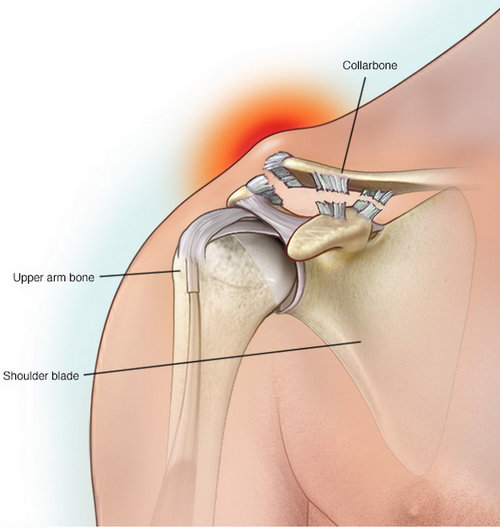
Picture 7 : A perfect depiction of the separation of the ligaments that connect the clavicle to the shoulder blade.
Image Source : www.mayoclinic.org
Distal Clavicle Osteolysis
Distal clavicle osteolysis occurs due to constant trauma to the shoulder as with some sports injuries. It causes the resorption of the subchondral bone. The specific pain is noted in the distal end of the clavicle near the AC joint pain. There is usually pain or discomfort upon palpitation of the area. (3)
References:
- http://orthoinfo.aaos.org/topic.cfm?topic=a00336
- https://www.braceability.com/shoulder-injuries/collarbone-pain
- http://emedicine.medscape.com/article/1262297-overview
- http://emedicine.medscape.com/article/92429-overview
- http://emedicine.medscape.com/article/828642-overview
- http://newsnetwork.mayoclinic.org/discussion/broken-collarbone-can-take-months-to-heal-completely/
- http://www.mayoclinic.org/diseases-conditions/broken-collarbone/basics/definition/con-20035171
- http://www.mayoclinic.org/diseases-conditions/thoracic-outlet-syndrome/symptoms-causes/dxc-20237890
- http://www.mayoclinic.org/diseases-conditions/separated-shoulder/symptoms-causes/dxc-20232326
- https://www.ncbi.nlm.nih.gov/pmc/articles/PMC4819086/
- Frozen Shoulder Workbook: Trigger Point Therapy for Overcoming Pain By Clair Davies https://books.google.com.mx/books?id=1UWvZsuL5rMC&pg=PA174&dq=collarbone+pain&hl=en&sa=X&redir_esc=y#v=onepage&q=collarbone%20pain&f=false
- The Pain-Free Cyclist: Conquer Injury and Find your Cycling Nirvana By Matt Rabin, Robert Hickshttps://books.google.com.mx/books?id=3w3xCQAAQBAJ&pg=PA144&dq=collarbone+pain&hl=en&sa=X&redir_esc=y#v=onepage&q=collarbone%20pain&f=false
- http://teachmeanatomy.info/upper-limb/bones/clavicle/
- https://en.wikipedia.org/wiki/Clavicle
- http://journals.lww.com/jbjsjournal/pages/articleviewer.aspx?year=2007&issue=10000&article=00022&type=Fulltext